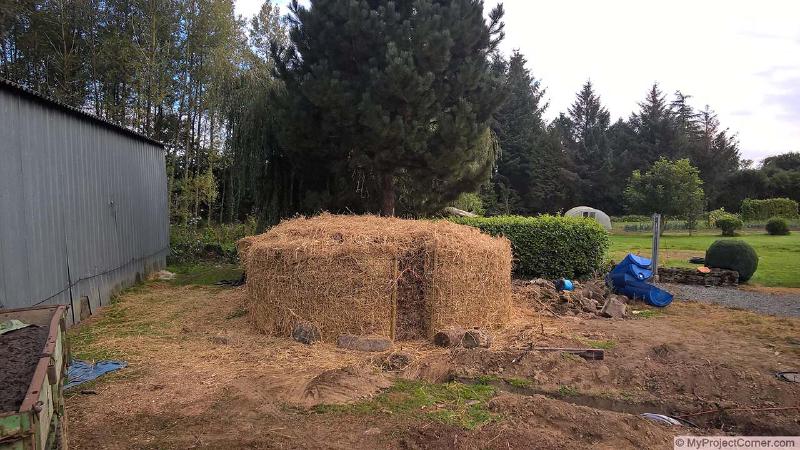
Finished compost heating system
Results
One week after constructing the compost heating system the average temperature reading from the sensors had risen to 68°C, which was a lot quicker than I expected. However I found that if I ran the circulating pump, on its minimum flow setting, after 3 days of continuous running the temperature of the pile would drop to a point where the composting action would stall and I think I was running the risk of turning the pile into a ‘cold’ compost.
Reducing the the period of time that the pump was extracting heat improved the situation and I was able to maintain the average temperature of the compost at around 50°C. The Raspberry Pi was programmed to turn off the pump when the temperature dropped below 40°C, and start it again at 55°C. This did mean that there was not enough supply to heat solely with the compost heating system.
After 3 months of use I decided that the heat that was being supplied to the underfloor system was not significant enough to be economic (when considering to cost of the build), so I decided to use the compost pile as a domestic hot water preheating system. As a family of six we use a considerable amount of hot water, often the 200 liter water heater is not enough, it runs on night time cheap rate electricity. Once connected the supply temperature to the water heater was on average 45°C, even allowing for the cooling in the supply pipes. This meant that during the day we rarely had to use extra electricity and at night it only had to raise the temperature of the water by 25°C instead of 65°C.
Towards the end of the winter (6 months after build) I had noticed that the temperature of the pile was falling slowly. It was at this point, after some investigation, that I realized the pile was drying out. We’d had a really dry winter (not normal for Brittany!), and I hadn’t thought to water the compost. With a good watering and the addition of some liquid slurry from the farm I rebooted the composting action, although it took a couple of weeks to get going.
In total the system continued to work for 14 months, with the occasional addition of a water and slurry mix to give it a boost.
After this point I decided to break down the compost pile, this took me about day to complete on my own. The resulting compost (6m3) was stocked for future use in the garden and the bottom layer had remained relatively un-composted so was set aside to be used as mulch for flower beds.
Conclusions
Was it worth it? Yes and no, firstly the no, as a heat supply for my underfloor heating it was not adequate.
On the plus side, the project was very interesting and I learnt a lot about how composting works. It was also nice to involve other family members in one of my projects. As far as the costs are concerned, I think about half of these were covered be the saving in electricity for hot water and the rest, well we won’t need to buy bags of compost for a few years!
I think that if I had looked after the pile (i.e. watering and feeding) maybe I wood have maintained a higher temperature for longer.
On breaking the pile apart I could see that there was still a fair amount of materials that could be have been composted further.
Would i do it again
Yes, I’d like to experiment with a smaller version, or maybe two in parallel.
But concentrating on heating domestic hot water.
